The American holiday Mother’s Day came about chiefly due to the efforts of one woman, Anna Jarvis. After the death of her mother in 1905, she conceived of a day honoring all mothers. The first Mother’s Day celebration occurred in 1908. In 1914, President Woodrow Wilson signed a measure establishing the second Sunday in May as Mother’s Day.
Throughout the 20th century, mothers have taken center stage on our covers and in our magazine. As a special tribute to moms everywhere, we present this collection of Norman Rockwell covers where moms and grandmas play a starring role:
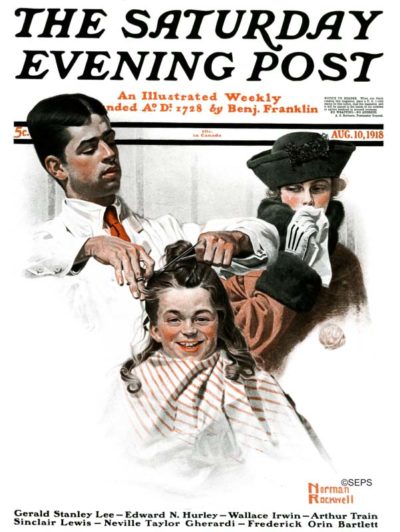
August 10, 1918
This momma’s boy is absolutely thrilled to be losing his luxurious locks, but his mother mourns more than just the loss of those curls: her little boy is growing up.
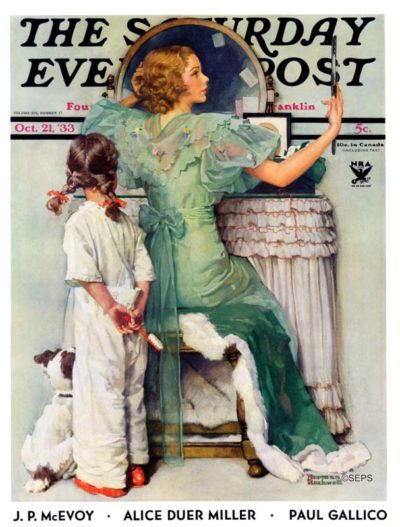
October 21, 1933
When this cover was published in 1933, a mother in Rockwell’s New Rochelle neighborhood thought the girl in pigtails looked just like her daughter — so much so that she framed the magazine to hang on her wall. Years later, Rockwell found out and gave the nostalgic mother the original oil painting.

November 25, 1933
Resisting the urge to wallop her child for researching the aftereffects of a hammer on household objects, this mother jumps to a psychology book for help. The scene, we’re told, may have been inspired by actual events in the Rockwell household. When this 1933 illustration was published, Norman and Mary Rockwell’s oldest son, Jerry, had just reached the “terrible twos.”
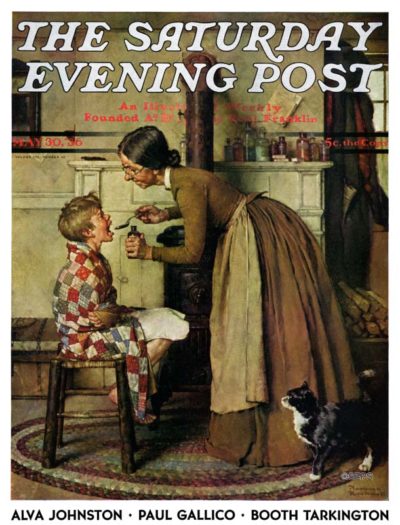
May 30, 1936
Tom Sawyer’s mothering Aunt Polly and her force-feeding “quack cure-alls” prompted Rockwell to create this cover in 1936. The image also appeared in a reprint of Mark Twain’s The Adventures of Tom Sawyer, which Rockwell illustrated for Heritage Press that same year.

April 27, 1940
Remembering kids’ birth dates can be tough, especially if you can’t recall just how many kids you have. While this mom attempts to count off those birth dates, a passel of kids peeks out from behind her to catch a glimpse of the strange man who’s writing it all down in a large black book. The scene, which takes place in California according to the census book, graced the Post cover in 1940, when the bureau was conducting its 16th census of the United States.
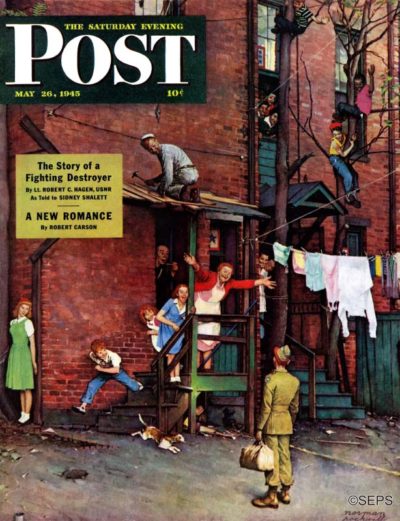
May 26, 1945
This 1945 painting of a young GI returning to the open arms of his mother is one of Rockwell’s most celebrated. The idea for it came to Rockwell after he read a series of 1944 Post articles written by Charles “Commando” Kelly and Pete Martin.
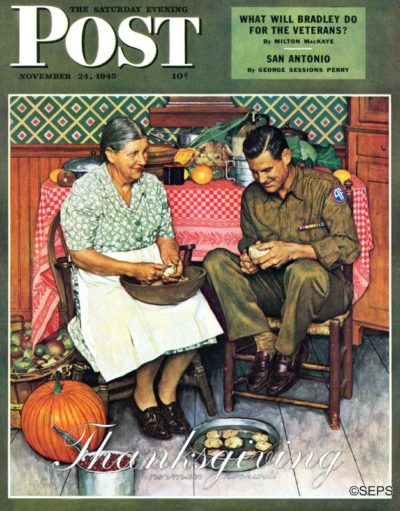
November 24, 1945
During World War II, Rockwell illustrations like this one boosted the spirit of America, especially in mothers of sons fighting overseas. Perhaps what made this one all the more touching for Post readers was knowing that the models in this homespun scene were an actual mother and son pair — Alex Hagelberg and her son, Dick, a bombardier who flew 65 missions over Germany.
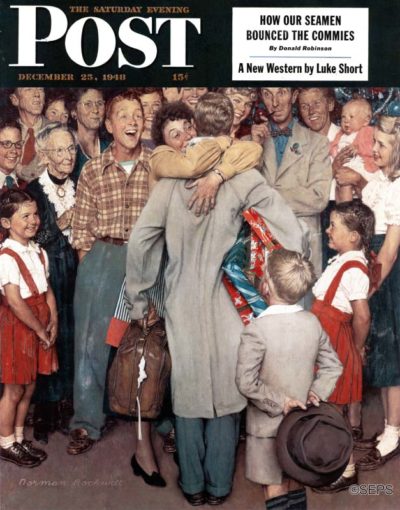
December 25, 1948
Another happy scene featuring a true-to-life family. Mother Mary Rockwell hugs and welcomes oldest son, Jerry, home. To her right, the boy in plaid is middle son, Tommy, and to her far right, in glasses, is youngest son, Peter. Artist Rockwell stands at her left. And between the two younger boys stands another famous painter — and mother of five — Grandma Moses.
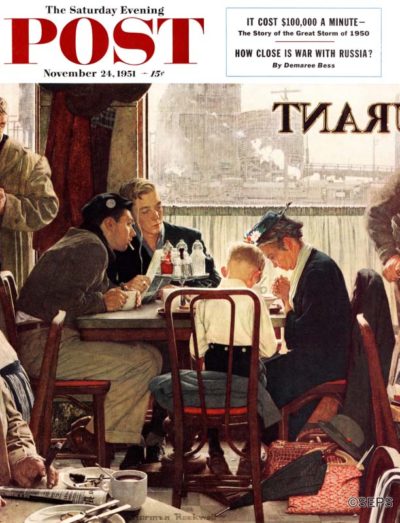
November 24, 1951
One of the best-known of Rockwell’s works, this painting of a grandmother and grandson praying in a diner was voted the Post readers’ favorite cover in 1955. Though May Walker, the woman who posed as grandmother in this painting, died just five days before the issue appeared on newsstands, she did get to see the painting completed. People who knew Walker well told the Post that posing for this cover was one of the most enjoyable moments in her life.
Become a Saturday Evening Post member and enjoy unlimited access. Subscribe now


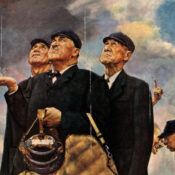

Comments
So love all the wonderful pics….and congrats to Norma Vanden Broek! Keep enjoying and remembering, as I do too!
The early 30’s the war, my hubby coming back home, so many memories. Rockwell was a genius
These pictures are so precious to me, because I lived through those great days. You see I’m 93, and remember all the circumstances.
I love them all but I do not have anyone of them. I have others in plates.